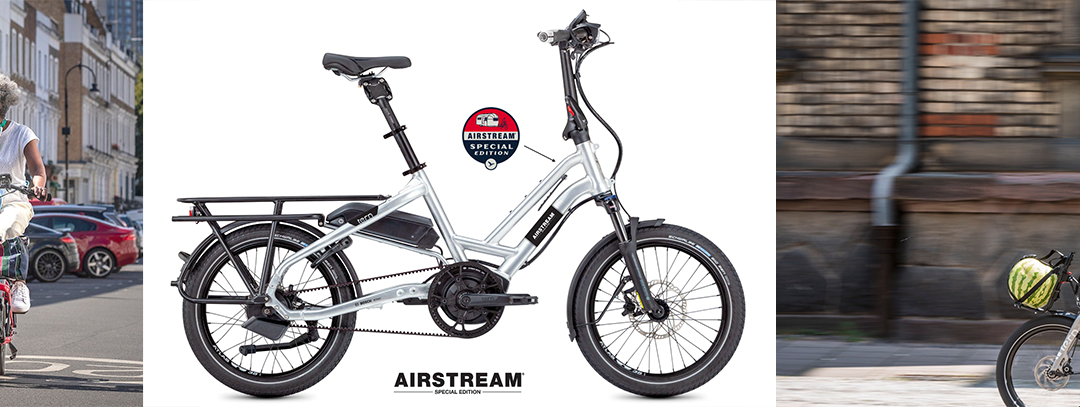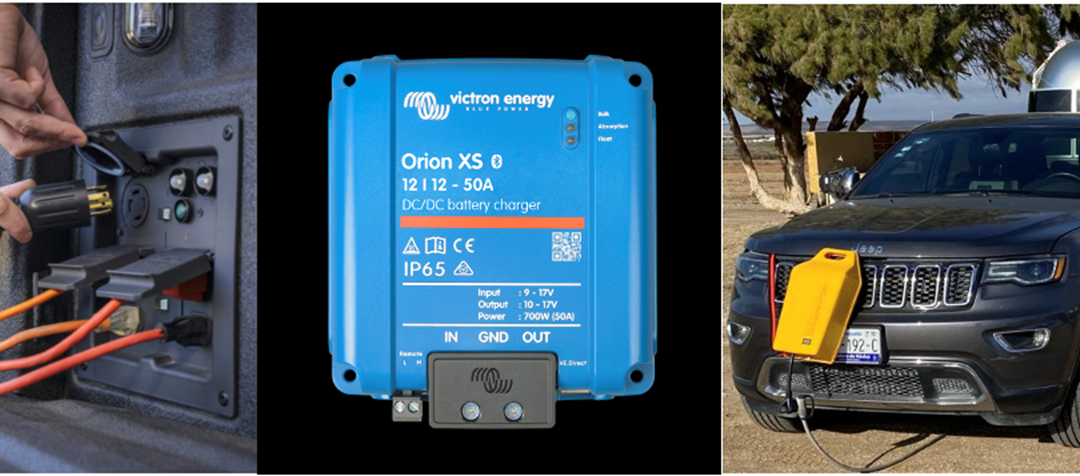No matter how hard we try to keep our Airstreams in tip-top shape, they are homes on wheels, and they will need maintenance and repairs from time to time.
Airstreams have a long list of systems and equipment that make our camping more comfortable and safer. Let’s look at a few of the major systems that commonly cause problems:
- Electrical systems:
- 12-volt batteries, DC panel, fuses, converter and circuit breakers, lights, fans, jack
- 120-volt AC: AC panel, shore cord, breakers, outlets, inverter, appliances, air conditioner
- Plumbing systems:
- Freshwater system: fresh tank, strainer, hose and filters, water pump, water heater, faucets, shower
- Gray water system: sinks, shower, gray tank, tank valve
- Black water system: toilet, black tank, tank valve, sewer hose
- Propane system: external LP tanks, hoses, regulator, range, refrigerator (two- or three-way), water heater, furnace, grill ports Hoses
- Safety systems: smoke detector, LP/CO detector, fire extinguishers, emergency exits
It is impossible to address all the possible problems that you may encounter on your RV, but we will look at some of the most common problems you may encounter.
HVAC issues
The RV roof air conditioner (AC) is one of the most common ways to keep it comfortable inside the RV. Fortunately, there are a few common RV HVAC problems that are relatively simple to troubleshoot.
The first thing to check is that the shore power cord is plugged into the 30/50 amp outlet and the pedestal breaker is on, and that the main circuit breaker and AC breaker are not tripped.
Next, check the filters on the intake of the AC. Make sure that the filters are clean, and if dirty, take them out and thoroughly clean them.
Next, check the thermostat. Sometimes the AC unit is fine and the thermostat is the issue. If the control unit is on the fritz, it can’t properly tell your HVAC unit what to do. To further troubleshoot the thermostat, you will need a DC volt meter. Check to make sure there is around 12-13 volts between the R (Red) terminal and the B (Blue) terminal. See the table to the right.
If you are OK with getting up on a ladder, carefully remove the four screws that hold the cover on the AC roof unit. Now look through the fins along the back and/or sides of the unit. If they are clogged with dirt and debris, spray with a good multi-purpose cleaner, and use a hose to gently wash the dirt out. These fins are where the AC gets rid of the heat from the inside of the RV, and if they can’t do that, the unit won’t cool very well.
The last step is for the brave and those with some electrical background. Make sure that the shore power cable is unplugged, the main breaker is turned off, and that any large inverter is disconnected and off.
There are typically two capacitors that are part of the AC. One is the START capacitor (usually smaller), and the other is the RUN capacitor. Note: If you have added EasyStarts or SoftStarts to your AC, the original START capacitor will be either disconnected, or removed altogether. If so, then don’t worry about it, as the EasyStart/SoftStart becomes the START capacitor.
Before you touch the terminals of the capacitors, use a short piece of No. 12 wire to short the terminals together. This will remove any stored charge in the capacitor itself.
Over time, and if you have experienced any significant electrical surges, the original START/RUN capacitors may become weak or stop working altogether. One symptom is if the compressor tries to start, but never comes up to full speed, and runs normally. If you can get a capacitance meter, use it to test both the capacitors. There will be a label stenciled on the side of each capacitor that will tell you the rating of the capacitor (in microfarads, μF) and a voltage listing. Replacement capacitors can usually be found at appliance repair centers or off your favorite online merchants. If this gives you the hives, then step back, and call your friendly RV mechanic. Remember, safety first.
Electrical problems
Troubleshooting electrical problems on an RV does not require an electrical engineering degree (but it certainly helps). Also, electricity can be very dangerous, so if you are not comfortable around 120-volt AC systems, hire a professional.
When tracking down an electrical problem, it is best to start at the source: shore power, generator or inverter.
First, check the breaker in the shore power pedestal, to make sure it is not tripped. If on the generator, check the breakers on the outlets of the generator, and if using the inverter, make sure its breaker is closed, and you are not overloading the capacity of the inverter.
All of these sources will be fed through your AC distribution panel where the circuit breakers live. Check for a tripped breaker, if in doubt, cycle the breaker handle to the off position, and then back on. Sometimes, this will solve the problem. If the breaker keeps tripping, either there is a problem in the circuit wiring or the appliance plugged in to it, or maybe the circuit breaker is going bad. To check the wiring, unplug all appliances from the outlets on that circuit. If the problem goes away, carefully check out the appliance that was plugged in. If it continues, either you have a bad (worn out) breaker, or there is an issue with the wires in the walls of the Airstream. Sometimes, replacing the breaker is the only way to know which is the problem.
Plumbing problems
Let’s start with the RV water pump. If the pump is running, and no water is coming out of the faucet, the first thing to check is the water level in your fresh water tank. I know this sounds pretty basic, but these simple things are often the problem. Make sure you have the tank at least 1/4 full. Secondly, many RVs have a strainer/filter between the tank supply hose and the water pump. Make sure the strainer is not clogged with debris or crud. If it is, turn off the pump, remove the strainer, clean it completely and re-install it. Be careful when tightening it, as there is usually an O-ring that must be in the right place when installed.
Next, hook up a hose to the external water connection. With pressure on the hose, check to see if the water comes out of your faucets. If it does, then the issue is with the pump or the supply line from the tank to the pump. Check to see if the supply line has been kinked, cutting off the supply of water to the pump. When a water pump fails, it sometimes fails to prime itself, and you need to replace the pump. Another common issue, is that the pump runs, builds up pressure, turns off, and then periodically runs in short bursts.
The pump is designed to turn on when the pressure drops to a set level. It runs to raise the pressure to the turn-off set point. When it runs in short bursts, when you are not using any water, there is likely a leak somewhere in your water system. Get out your flashlight and look for any signs of a leak. You may need to pull some drawers/panels to see under your cabinets/beds/or kitchen areas. If you can’t find the leak, it is time to get some professional help. Water roaming outside the pipes of your RV is the start of BIG problems. Get it taken care of ASAP.
RV refrigerators
There are a few RV refrigerator troubleshooting steps to take, however, before you start ripping your hair out. And the good news is, the first one is shockingly simple:
Make sure the RV is level. If your RV is using an absorption-based refrigerator (all multi-fuel units that run on AC, LP and/or DC), the RV must be level to allow the coolant to flow through the piping on the back of the fridge. The newer, DC compressor fridges, are not as sensitive to being level.
Next is to determine if the fridge is working at all. Check for operation both on AC and LP. If it works on one but not the other, we have narrowed down the problem. RV fridges need 12 VDC at the refrigerator circuit board to power it. Make sure that the 12 volts are present on the rear of the fridge.
If your fridge is on the gas setting, go outside, open the compartment cover of the refrigerator and make sure the flame is burning. The flame will be hidden behind a couple of shields that are there to protect you from getting scorched, and to shield the flame from gusts of air that might blow out the flame. If you are in a quiet environment, you should be able to hear the flame burning. If it is not, then you need to find out why. First, make sure you have enough propane in your tanks. Next, remove the metal shields from the area of the flame tube. Use a small brass bristle brush to clean the top of the burner tube of any rust/dirt/soot. Blow out the tube with compressed air.
Before you replace the shields, check to see if there is a thermocouple that extends into the flame area of the burner. They do sometimes fail, and when they do, the flame will light, but after a few seconds, the burner turns off. The only option is to replace the thermocouple. The flame should burn strong and blue as seen here.
From there, your attention should probably shift to the control circuit board on the back of the fridge. There is no easy way to figure out if the board is bad, other than to replace it. There are a number of options, first the refrigerator manufacturer will have a replacement board. Or, there are some very good third-party companies that make replacement boards. We have had really good luck with Dinosaur Electronics boards. They are made in the USA and carry a three-year warranty. While it is unlikely, there is an LP control valve that is controlled by the control circuit board that could fail to open when commanded to. That is not a repair that I recommend for an average RVer.
If the fridge will work on LP but not AC, make sure that the breaker that feeds the outlet behind the fridge is not tripped. If so, reset, and use an AC volt meter to check the voltage at the outlet. It should read around 120 volts. When set to use AC, if you have a clamp on AC ammeter, you should see about 3 amps running through the wired to the AC heating element. If you don’t see that, it may be that the element is burnt out, a wire has come loose, or the control circuit board is bad. You will need to do further testing to find out which is the problem.
While this is certainly not a complete troubleshooting guide for Airstreams, it should give you a few ideas of what to look for when you have a problem with one of these systems. Other great sources of help are forums, YouTube videos and your friends in your local clubs.
Over the last two years, we have been privileged to share some information on keeping your Airstream on the road and not in the shop. It has been an honor to be a part of the Airstream Club and the Blue Beret. Thank you for the many emails and comments on our articles. As we complete this last article, we wish you all safe and exciting travels across our wonderful county.
If you have technical questions or comments, please send them to techhelp@wbcci.org.
Happy Camping!




